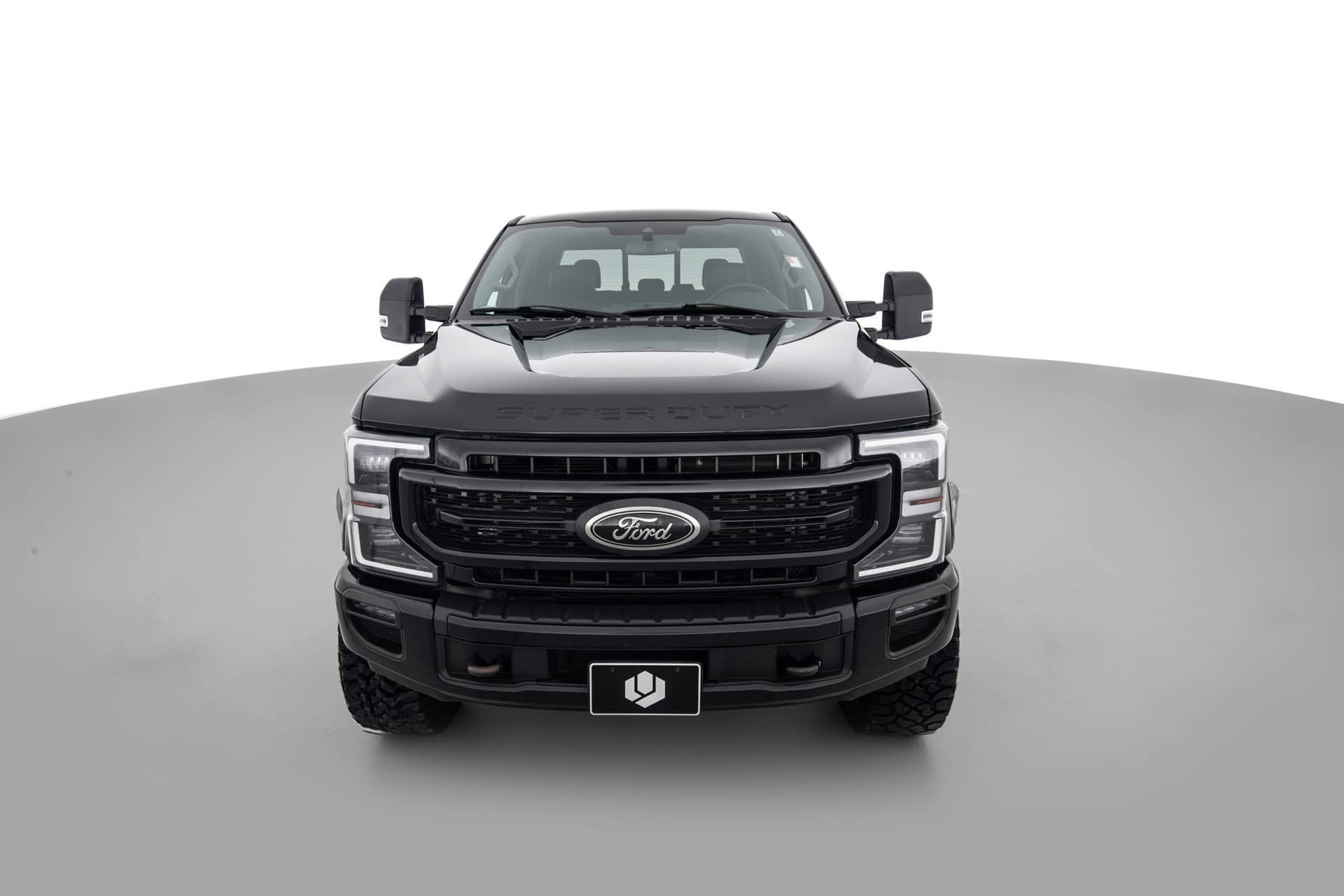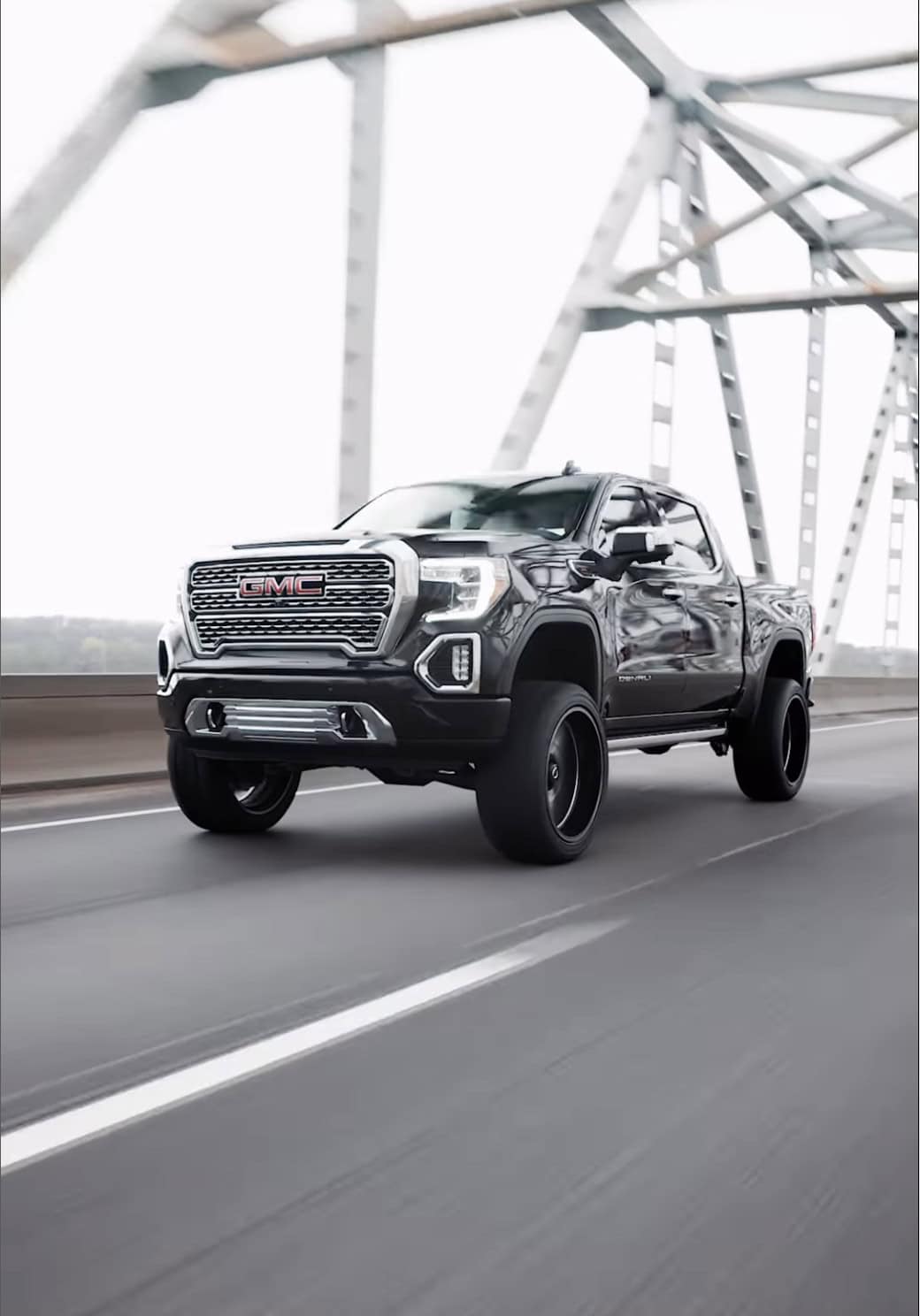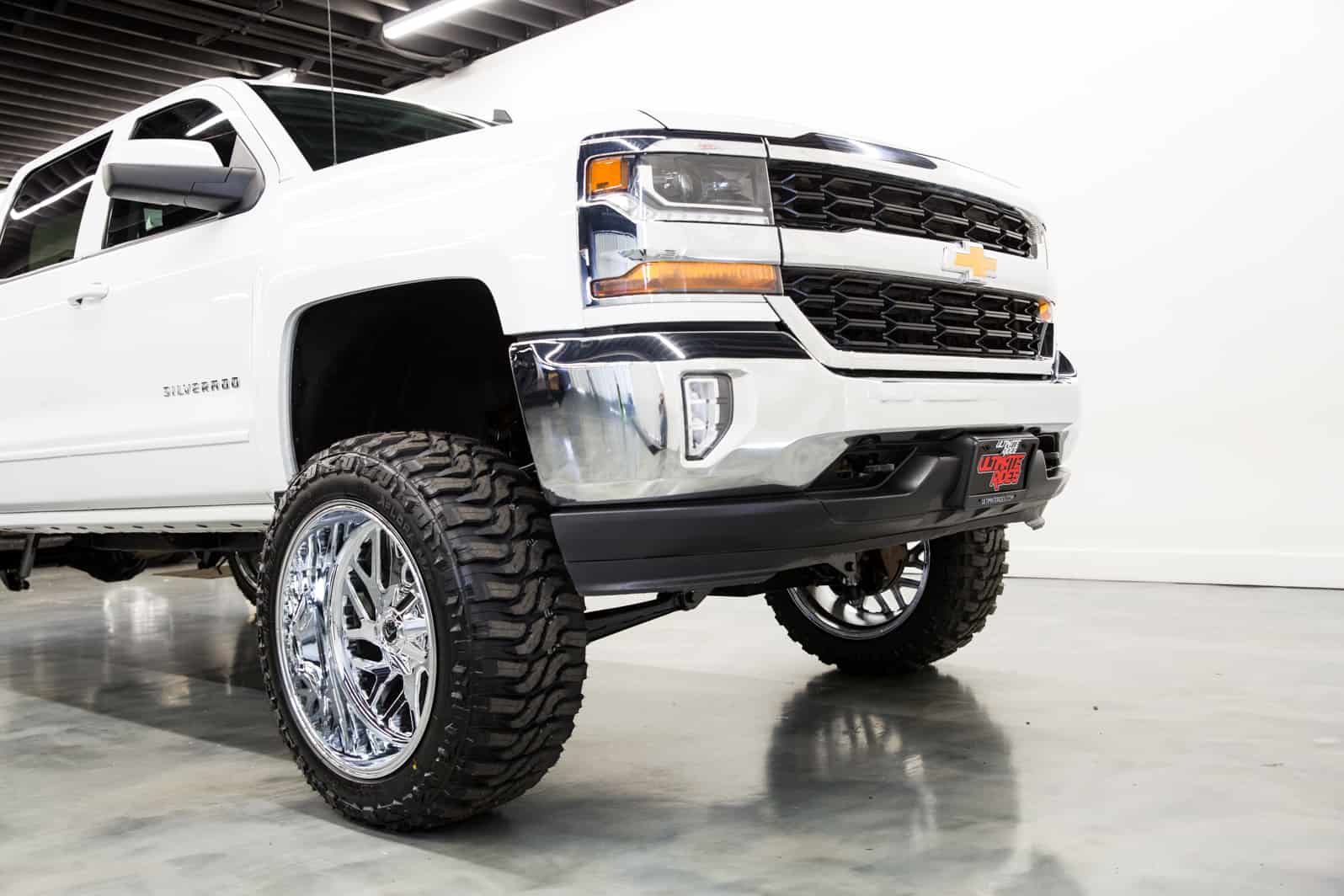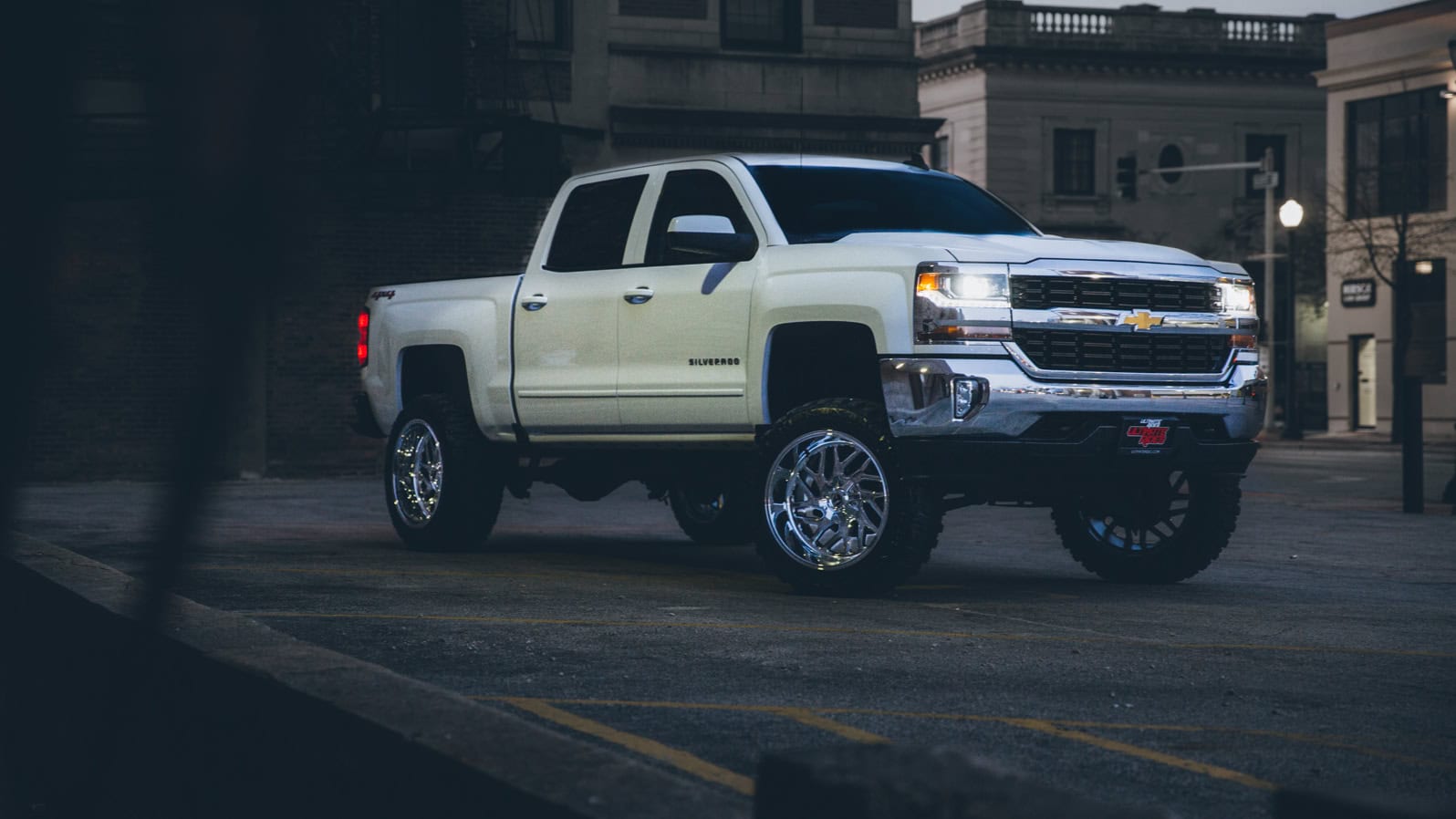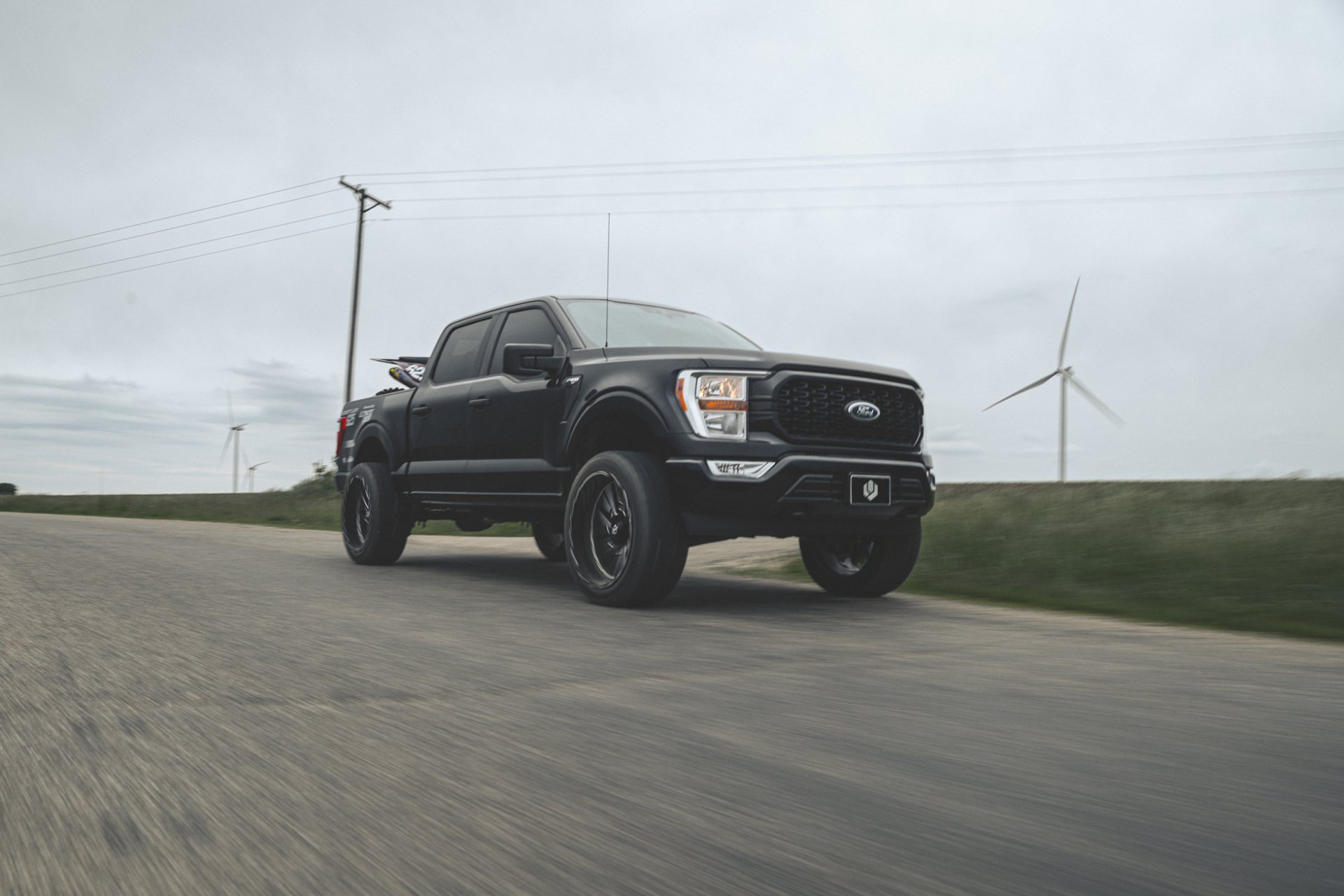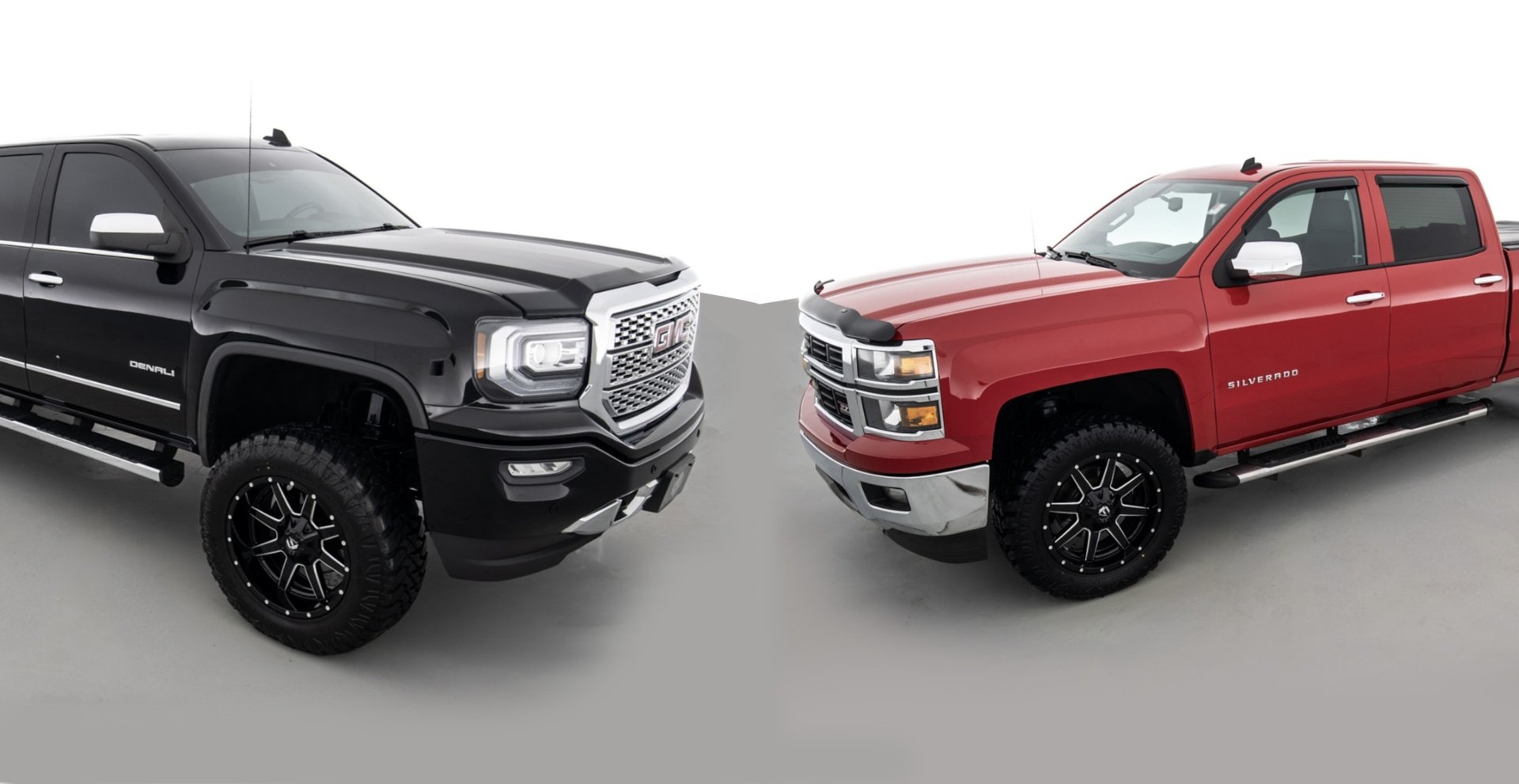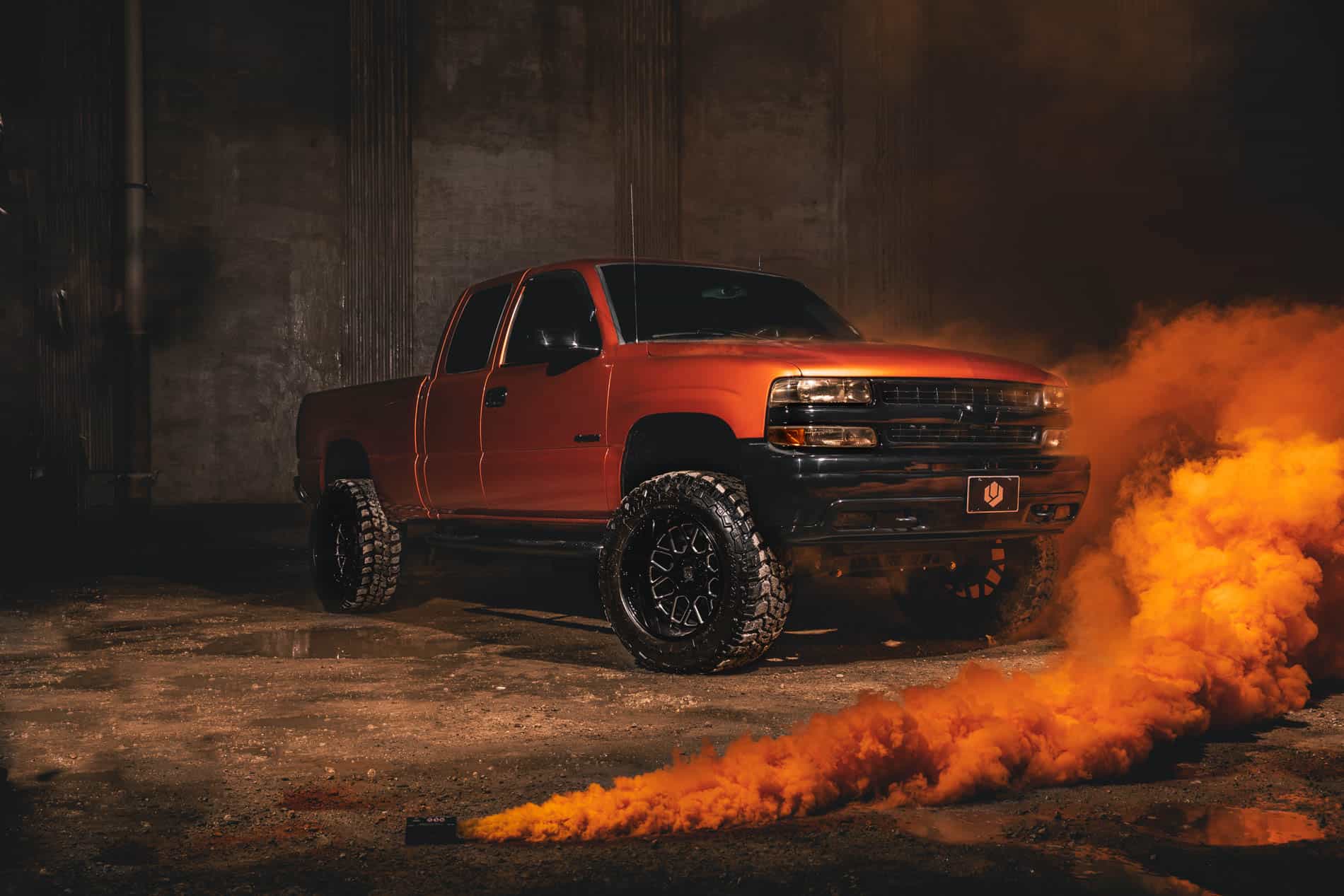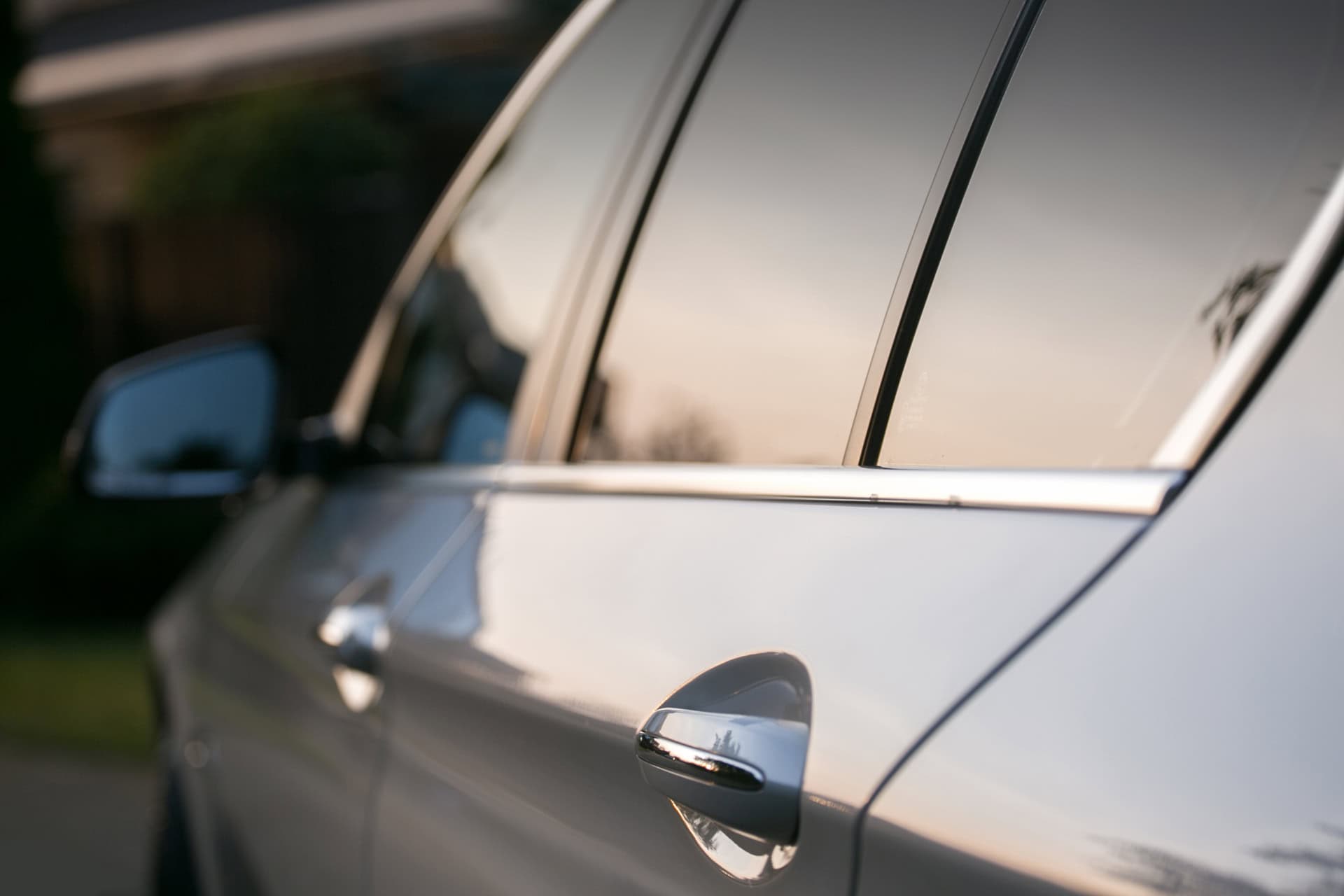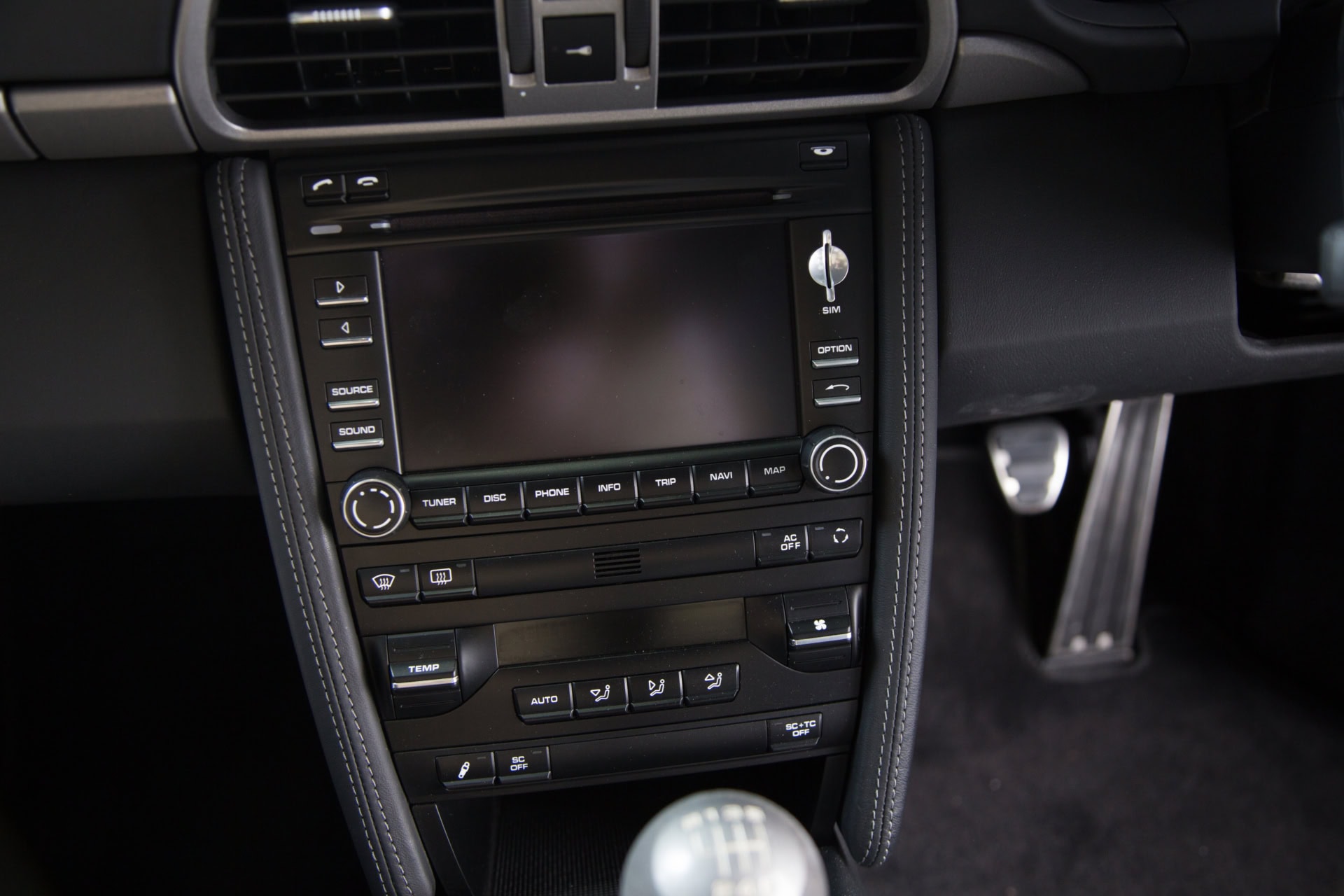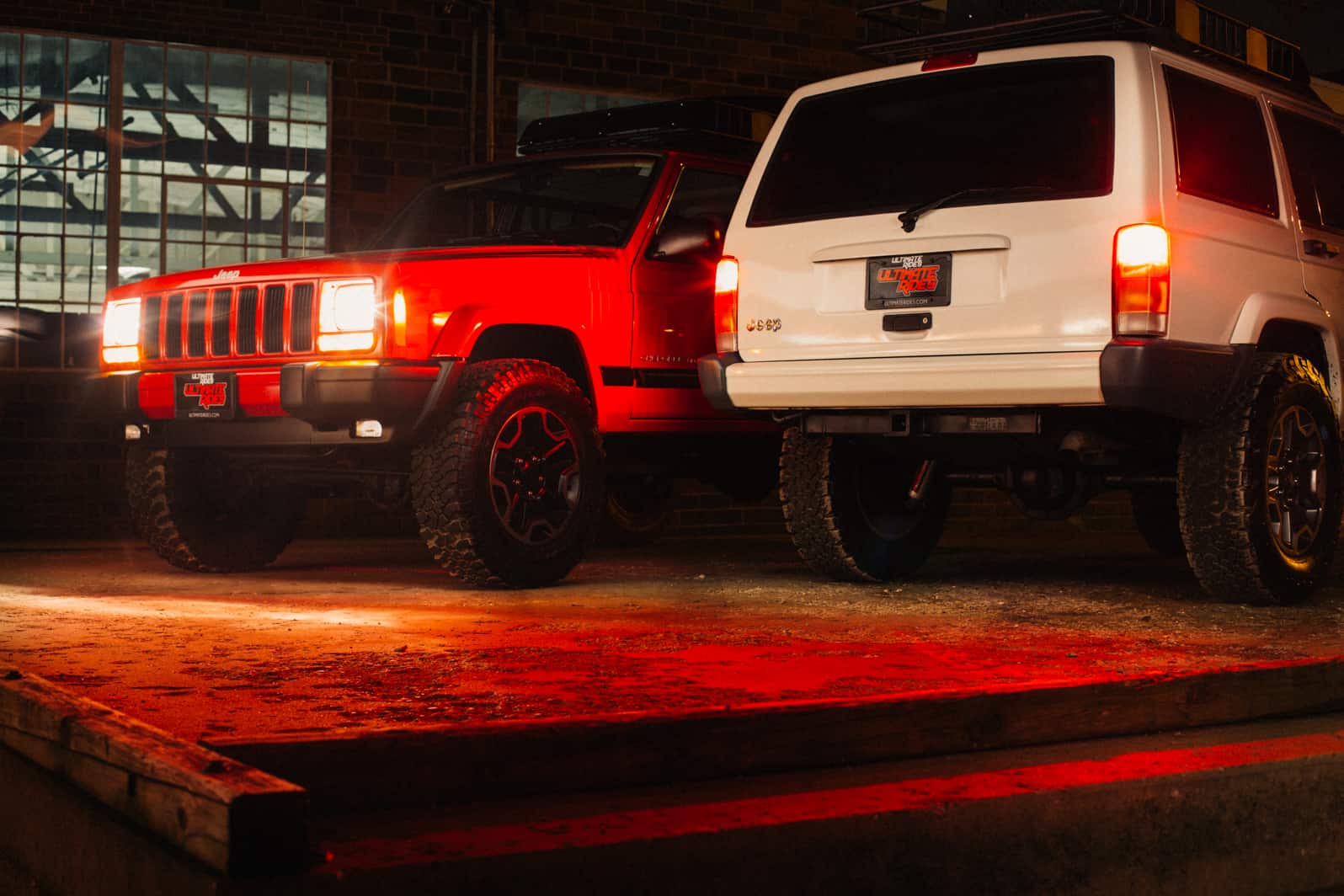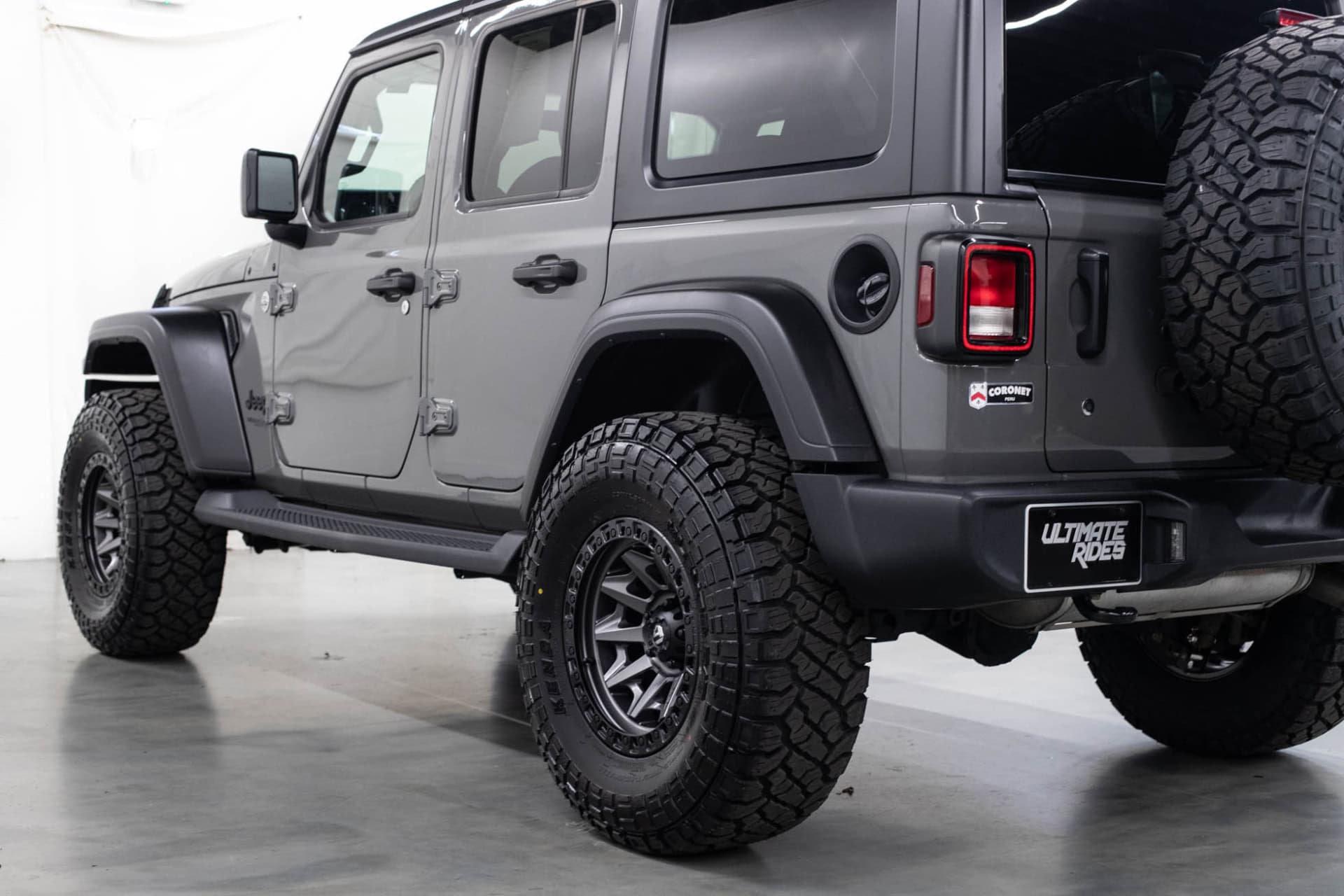If you’ve ever wondered about the recommended tire pressure for pickup trucks, you’ve undoubtedly discovered that this is a fairly complex topic. To be clear, tire pressure is absolutely crucial to the wellbeing and overall function of your truck.
However, your pickup truck tire psi is dependent on various factors, including:
- Your truck’s make and model (each manufacturer provides specific information for every model)
- Your tire size (different tire sizes have different standard pressures)
- Your tire model (brands and models may differ, even at the same size)
- Application (when driving offroad, you require different pressure than when driving long-distance on a highway)
- Load weight (heavier loads may require different PSI than an empty truck)
All in all, it’s difficult to say that there’s such a thing as a normal tire pressure for your truck. In this guide, we’ll undertake to provide the understanding you need to adjust your tire pressure correctly for every situation.
Understanding Tire Pressure Basics
Determining the ideal tire pressure for your truck starts with understanding the basics of what tire pressure is and how it affects your vehicle. Let’s discuss the basic elements.
What Is Tire Pressure and Why Is It Crucial?
Tire pressure refers to the amount of air pressure within your tire and is measured in pressure per square inch (PSI). Unlike most cars, a truck may carry various loads of different weights and sizes.
For most cars, you can simply look at the recommended manufacturer tire pressure (listed on the vehicle’s door jamb), and keep the tires at that pressure. With a truck, you need to take into account the load and several other factors as well.
Standard Tire Pressures for Trucks
When considering tire pressure for truck tires and those of other vehicles, it’s worth noting that there are certain standard pressures for different tire sizes. Depending on the model of your pickup truck, the tire pressure may vary significantly.
Some trucks rely on standard car tires, while larger trucks may have considerably larger tires. This table represents the standard tire pressures for different tire sizes.
| Standard PSIs for Different Tire Sizes | |||
|---|---|---|---|
| Ring Size | Tire Size | Front Tire Pressure (psi) | Rear Tire Pressure (psi) |
| Ring 18 | 225/60 | 30-33 | 30-33 |
| 235/50 | 40-43 | 40-43 | |
| 235/65 | 33-36 | 33-36 | |
| 265/60 | 29-32 | 29-32 | |
| 285/60 | 40-43 | 40-43 | |
| Ring 17 | 205/45 | 32-35 | 30-33 |
| 205/55 | 32-35 | 30-33 | |
| 205/60 | 33-36 | 33-36 | |
| 215/45 | 33-36 | 33-36 | |
| 215/50 | 33-36 | 33-36 | |
| 215/55 | 33-36 | 33-36 | |
| 225/60 | 32-35 | 30-33 | |
| 225/65 | 32-35 | 30-33 | |
| 245/75 | 33-36 | 36-39 | |
| 265/65 | 30-33 | 30-33 | |
| 286/65 | 33-36 | 33-36 | |
| Ring 16 | 185/55 | 30-33 | 30-33 |
| 185/60 | 33-35 | 33-35 | |
| 185/65 | 33-35 | 33-35 | |
| 195/50 | 30-33 | 29-32 | |
| 195/55 | 30-33 | 29-32 | |
| 205/55 | 30-33 | 30-33 | |
| 205/60 | 33-35 | 33-36 | |
| 205/65 | 30-33 | 33-36 | |
| 215/65 | 33-35 | 33-36 | |
| 235/60 | 33-35 | 33-36 | |
| Ring 15 | 175/55 | 30-32 | 30-32 |
| 175/60 | 30-32 | 30-32 | |
| 175/65 | 30-32 | 30-32 | |
| 185/55 | 30-33 | 30-33 | |
| 185/60 | 30-33 | 30-33 | |
| 185/65 | 30-33 | 30-33 | |
| 195/50 | 30-33 | 32-35 | |
| 195/55 | 30-33 | 32-35 | |
| 195/60 | 30-33 | 33-36 | |
| 195/65 | 30-33 | 33-36 | |
Common Symptoms of Incorrect Tire Pressure
When your tire pressure is incorrect, it can have negative consequences. Some unintended, but common, symptoms of the wrong tire pressure include:
- Uneven tire wear: When you have an inappropriate tire pressure, it may result in wear on specific parts of your tires, rather than spread across the entire tire. For instance, you may wear only on the sidewalls of the tire, in an underinflated tire, or only on the center of a tire in an overinflated tire.
- Poor fuel economy: Underinflated tires can lead to reduced fuel economy because they result in higher rolling resistance, making the engine work harder to propel the vehicle.
- Reduced handling: If you’re experiencing reduced handling, it may be due to the incorrect tire pressure. Underinflated tires lead to reduced grip, steering response, and stability. Overinflated tires may have the opposite effects.
- Safety hazards: Incorrectly pressurized tires may cause safety hazards like reducing vehicle control and increasing the risk of blowouts.
These are some of the most common symptoms, but not the only ways to notice that your tire pressure isn’t quite right.
How Lifting a Truck Impacts Tire Pressure
Theoretically, lifting a truck (adding a raised suspension to the chassis or body of a standard truck model) can affect the tire pressure. If you decide to maintain the same tire size after the lift, that’s not really the case.
If you’re not opting for larger tires, the main consideration is weight. While a certain shift in the areas of pressure on the tire is unavoidable, that would only mean increasing the pressure slightly (by about 5-10 PSI, as long as that’s within manufacturer standards). In most cases, however, that would be unnecessary.
That said, most truck owners lift their trucks with the intention of using larger tires. In this case, you may experience uneven wear, reduced handling, and a range of other issues resulting from the wrong pressure.
You can easily find the correct tire pressure by following the tire manufacturer’s specs for your tire size, and a vehicle of your weight.
How To Find the Perfect Tire Pressure for Your Lifted Truck
When trying to find the ideal tire pressure for your lifted pickup truck, there are three main steps to take.
First, check the tire manufacturer’s recommendations for your tire size, vehicle weight, and speed. This will give you the best starting point from which to definitively discern the best tire pressure for your vehicle.
Next, you can start working with practical things to test different PSI levels and find the one that works best for you. Start with slight variations (around 5 PSI) and see how it affects the vehicle’s comfort, handling, and fuel economy.
Once you find a tire pressure that maximizes these things, you’ve determined the base pressure you need.
At this point, you just need to keep monitoring the tire pressures and making adjustments when necessary.
The Chalk Test
The chalk test is one way to check your tire pressure and ensure that your tires are wearing evenly. Here’s how:
- Drive your vehicle to a flat area, and allow your tires to cool down.
- Use a piece of chalk to draw a thick line across one edge of the tire (from sidewall to sidewall)
- Drive about 100 feet.
- Examine the chalk marks (on both the tire and the substrate), and follow these interpretations:
- Overinflated tires will lose more chalk in the centre of the tire than on the sides. Underinflated tires will mostly lose chalk on the outside.
Properly inflated tires will have chalk that wears evenly across the tire.
Adjusting Tire Pressure for Different Driving Conditions
When driving under different conditions, or in different places, you may need to change the tire pressure slightly to improve vehicle performance.
When driving long distances on well-maintained roads, you likely want to increase the pressure slightly to improve traction. Driving offroad typically requires a pressure reduction to offer better grip.
When towing or hauling heavy loads, you need to make adjustments based on the load size. You can look up your manufacturer’s specifications for a specific tire size and load weight.
This table shows the basic actions needed to optimize tire pressure under different circumstances.
| Condition | Action |
|---|---|
| Off-Road Driving | Decrease pressure from road pressure to increase tire footprint, improve traction, and enhance ride quality.
|
| Towing | Increase tire pressure, especially in the rear, to accommodate added weight. |
| Long-Distance Driving | Inflate tires to the manufacturer’s recommended pressure for the vehicle’s load and speed. |
Important note: Never inflate the tire beyond the maximum pressure printed on the tire. Doing so can have dangerous consequences.
Common Mistakes To Avoid With Lifted Trucks and Tire Pressure (And Tips)
Many new lifted truck owners make the same mistakes. Here are a few common mistakes to avoid:
- Ignoring regular pressure checks: It’s important to check tire pressure at least once, preferably twice, a month.
- Running excessively high or low pressures for aesthetic purposes: The wrong tire pressure will have negative effects on your vehicle performance. Always run at the right pressure, even if you think it looks nicer on the wrong pressure.
- Failing to adjust after tire size or lift changes: As mentioned, a lift will have some effect on tire pressure, as will larger tires. Always ensure that you’re using the correct pressure for your tires.
- Relying solely on visual tire checks instead of using accurate gauges: We can’t stress this enough. It’s impossible to accurately “eyeball” tire pressure. Using the appropriate, accurate gauges will help ensure optimal results.
Pro tip: Invest in a quality tire gauge and portable air compressor to maintain and measure pressure. You might also consider a TPMS (Tire Pressure Monitoring System) to facilitate accurate ongoing monitoring.
FAQs
What happens if I run incorrect tire pressure on my lifted truck?
The potential results may include higher risk of blowouts, more fuel consumption, and decreased handling, among other things. None of the potential results are desirable, so ensure you maintain the correct pressure at all times, for your safety and that of your vehicle.
Should tire pressure be different in winter vs. summer?
Yes, it should! Tire pressure changes by around 1 PSI for every 10℉ shift in the temperature. Considering how drastic the changes can be in certain parts of the United States, you’ll need to increase tire pressure in winter, and decrease it in summer.
How often should I adjust tire pressure after lifting my truck?
After your initial pressure, check the tire pressure fortnightly or monthly to ensure that it remains within an acceptable range. If you notice a pressure change between checks, check the tires immediately.
Can incorrect tire pressure damage my suspension?
Incorrect tire pressure is likely to directly damage your suspension, but it can reduce suspension performance, leading to increased wear and tear.
Conclusion
Maintaining the correct tire pressure for your lifted truck is relatively simple as long as you keep the vehicle weight, manufacturer recommendations, and tire size in mind.
If you’d like to learn more about suspension lifts, how they work, and their effect on your truck, contact us. We’d love to work with you and discuss your options.
